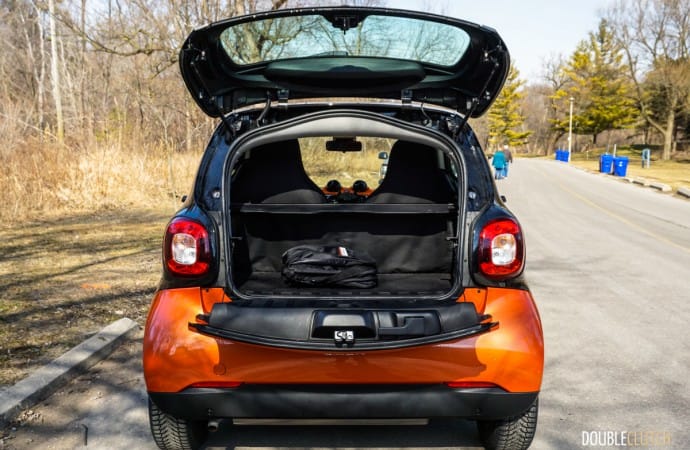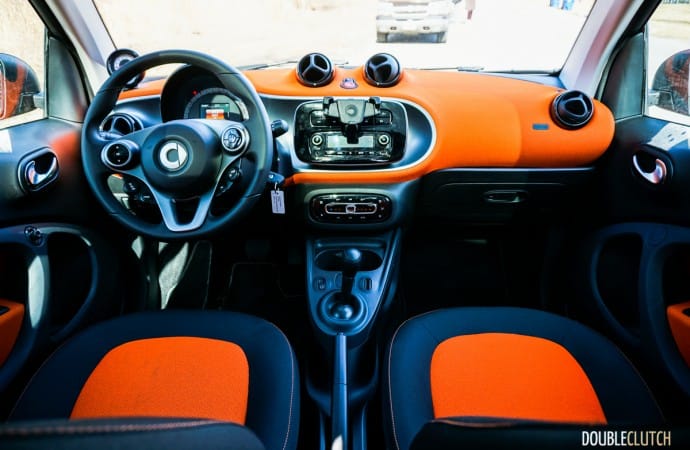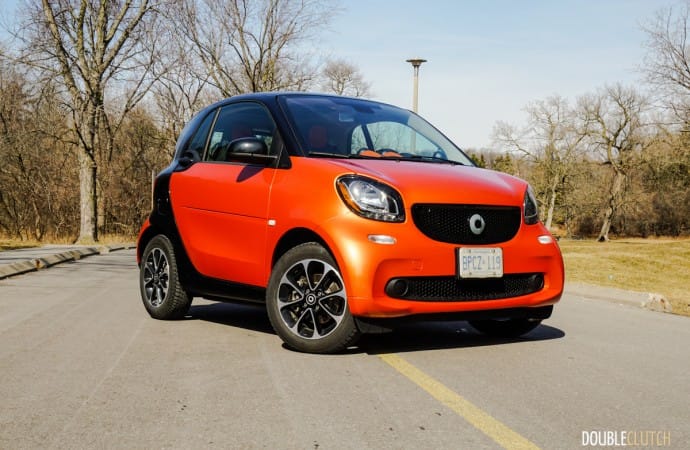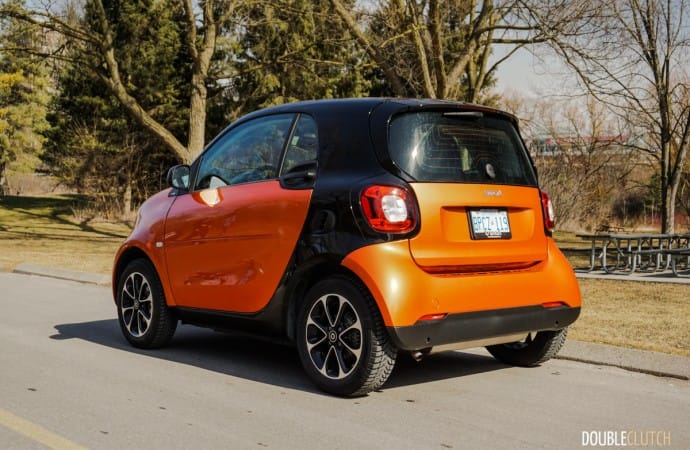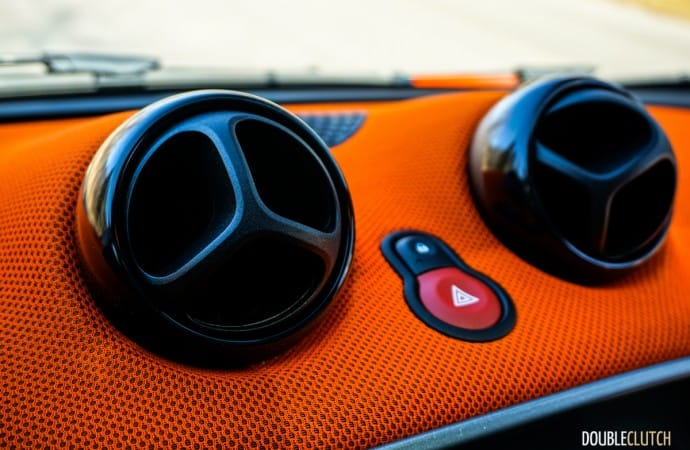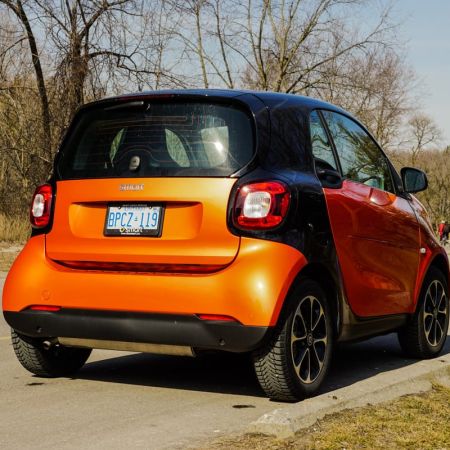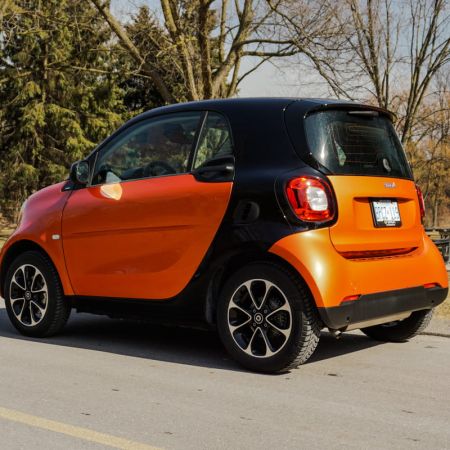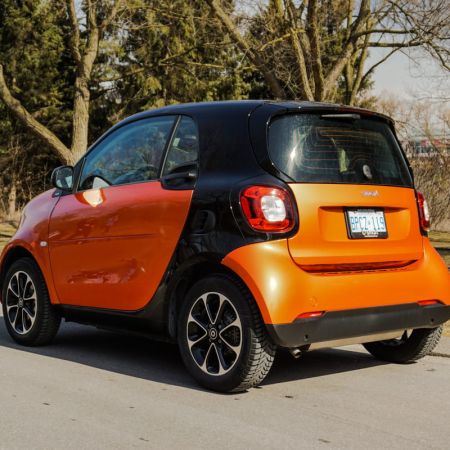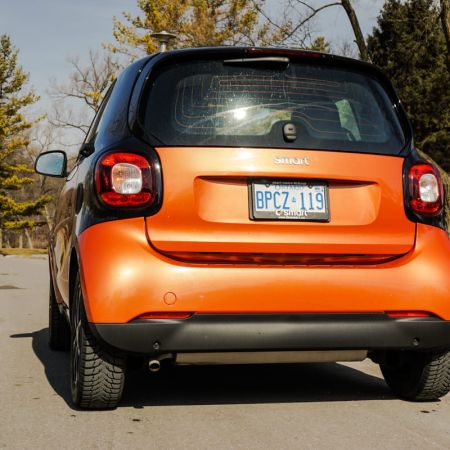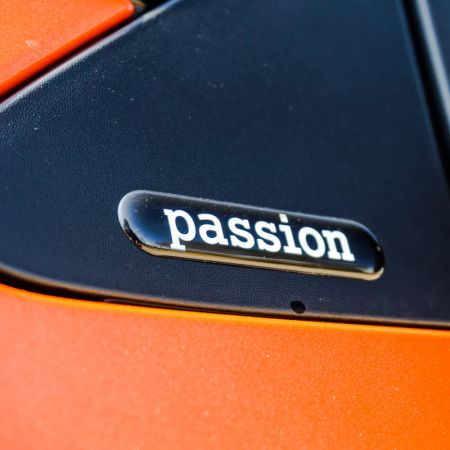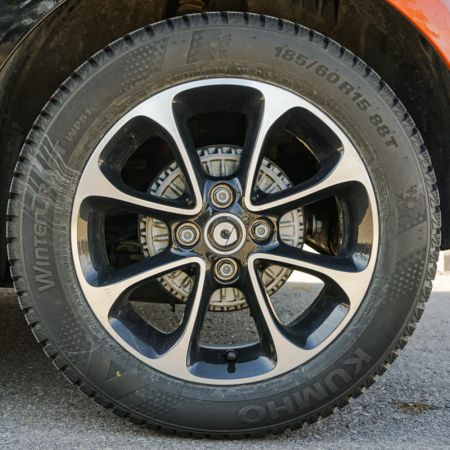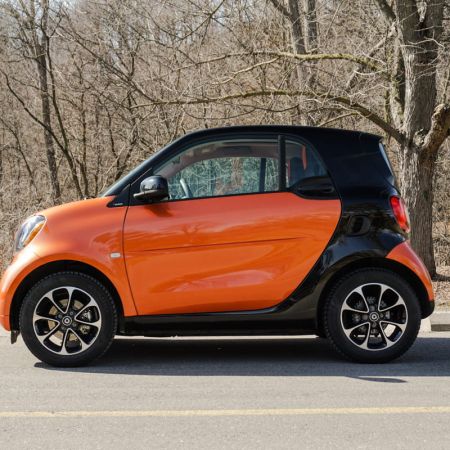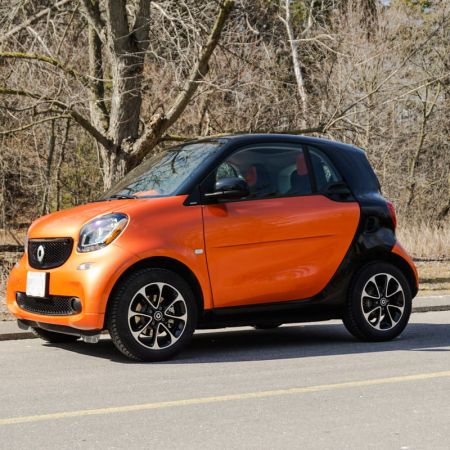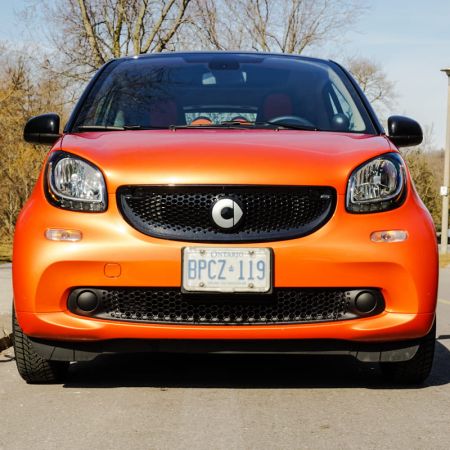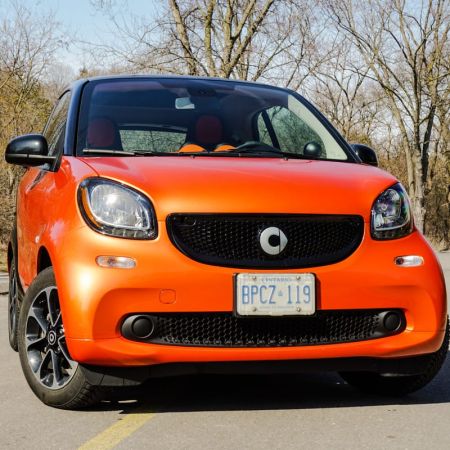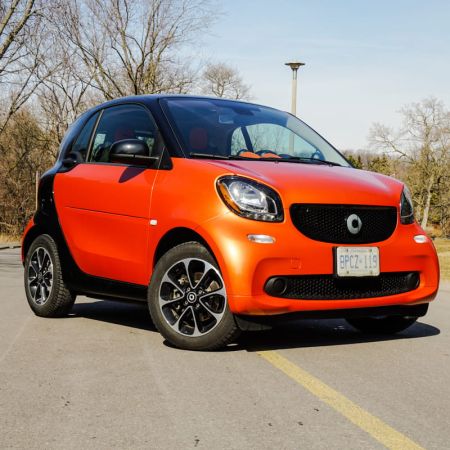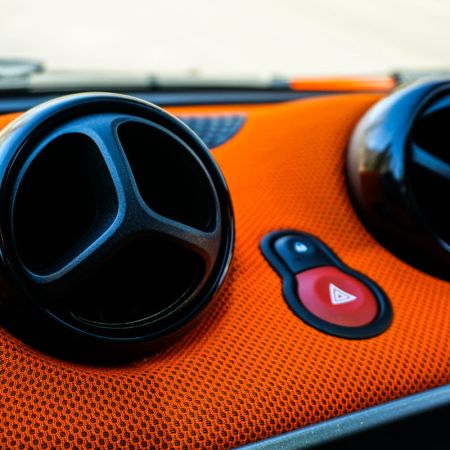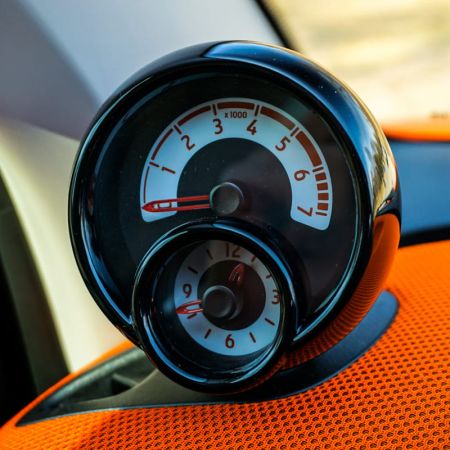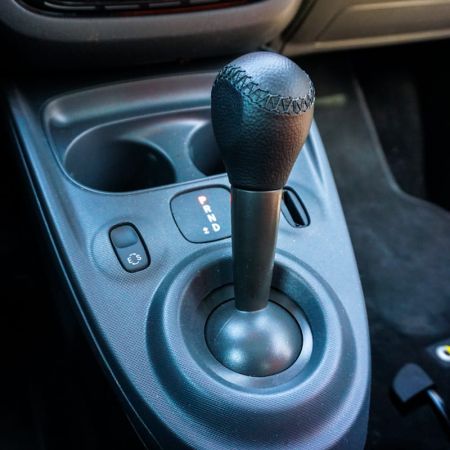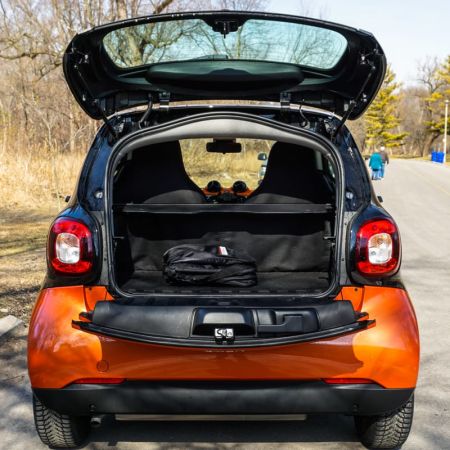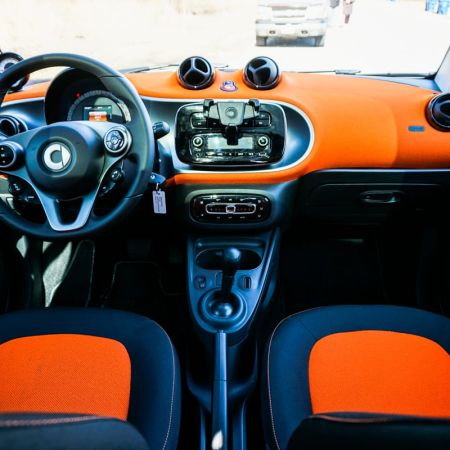Despite getting the chance to drive some of the greatest automobiles the world has to offer, it’s always refreshing to get behind the wheel of something completely different. In this context, the term “different” can be used to describe something as extravagant as the long-wheelbase BMW 750Li I recently reviewed, or as simple and affordable as this cheerful little two-seater. All new for this model year, Mercedes-Benz Canada sent me a 2016 Smart Fortwo to sample, complete with new styling and a new gasoline engine. Being a city dweller, I was eager to see what the latest Smart had to offer, because the previous model, clever as it was, just wasn’t my cup of tea.
I had a few issues with the previous model. For instance, the old single-clutch transmission was slow enough that you could say entire phrases in between shifts, the steering was numb and not at all reflective of the car’s intent, and the front seats were too close together. Parent company Daimler has done their level best to address all of these concerns, as well as others voiced by buyers and media, and have introduced the new model with a bang. Now, don’t get me wrong – the new Smart (technically marketed in lowercase) is by no means an Autobahn stormer. It’s a cheeky little car made for a very specific purpose.
Maintaining the previous car’s 106-inch length, the Fortwo has not grown at all in this dimension. However, it has been slightly widened for more interior space. The engine is located in the back, beneath the small trunk, and power is sent to the rear wheels. The new fascia is more substantial and gives the Smart a defined face, almost with a smile. LED daytime running lights set off the front end, and the trunk has a two-part liftgate. Even with all of the new model’s modifications, this little car is still unmistakably a Smart car, and looks like it packs all of the personality of the ideal city runabout.
Gone is the old diesel engine, which was unrefined and prevented the Smart from getting anywhere quickly. The new choice motor is a 898cc (0.9L) inline three-cylinder, turbocharged and intercooled. It pumps out a modest 89 horsepower (at 5,500RPM) and 100 lb-ft of torque (at 2,500RPM). Nowhere close to an AMG powertrain, this is the smallest displacement motor available in a Mercedes-Benz product. Thanks to its light weight, the Fortwo does not feel slow. In fact, zipping around the city in this little tyke is actually a boatload of fun.
The Smart accelerates on a dime and its quick steering rack allows you to quickly dart in and out of traffic, avoiding obstacles with the utmost of ease. Fans of last year’s hit Jurassic World will remember the round glass pods used as a park attraction. Sitting in the Smart, gobbling up the miles around the city evokes a similar feeling. The three-cylinder has a confident grumble, and there’s more than enough torque to propel you out of corners with ease. However, there is no way to disable the built-in stability control, so becoming stuck in deep snow might be an issue.
Smart does offer a five-speed manual transmission, which I would have liked to try, but my car was equipped with the six-speed dual-clutch automatic that most Canadian buyers will likely opt for. It’s not particularly quick to shift, an issue I was able to correct by using the manual shifting mode – the car feels far peppier and more responsive here. There are no paddles on the steering wheel, but the shifter is close enough in proximity and well sorted ergonomically, making for easy access. The availability of new transmissions is the single greatest triumph of the new Fortwo, and the efforts have not gone unnoticed.
One of the Smart’s greatest conversation tricks has always been its tight turning radius. The small size and nonexistent overhangs (front and rear) allow for spectacular maneuverability, probably the best of any current city car out there. The turning radius of 22.8 feet is a whole three feet tighter than the Scion iQ, which is similar in size. I had a blast throughout my test week showing friends and colleagues how easy it was to make a complete circle with the Fortwo. One prime example is when I pulled up to a gas station pump, not realizing that the gas cap was on the wrong side of the car. I was able to quickly turn it around without having to make a three-point turn, as would have been required by any other vehicle.
Speaking of gas stations, the Fortwo’s wicked efficiency meant I didn’t have to refuel frequently at all. Mercedes-Benz suggested when launching the new model that it would deliver 4.1L/100km with the new powertrain, and I was initially very skeptical. The thing with the Smart is that because it’s meant to be a city car, it needs a confident prod of the accelerator to actually get anywhere at a decent pace. This in turn affects the overall efficiency. Even still, in winter conditions using premium fuel and with a heavy mix of city driving, I was able to manage 4.9L/100km out of the first tank, which is capable of holding about 29L of fuel.
One small issue I faced was that the on-board computer displays fuel economy in km/L as opposed to L/100km. I discovered after fiddling with the settings for quite a while that there is no easy way to change this. It’s not a huge deal, as all this means is that the driver, if used to the regular Canadian way of calculating fuel economy, will have to do a little bit of hand calculation. Aside from this, the on-board display within the instrument cluster is actually pretty good, well-lit and easy to navigate with buttons on the steering wheel.
The rest of the Smart’s interior is very nice too – excellent ergonomics and huge windows mean no claustrophobia. The optional panoramic glass roof in my “Passion” tester was a great touch. Even at over 6’ tall, my frame fit comfortably in the Fortwo’s seats with no issues. There was plenty of legroom, and the sheer cabin volume meant no problems with headroom, either. Safety is maximized by means of the Tridion cell, which is structurally rigid and ensures the passenger compartment stays intact in the event of an accident.
Smart offers Canada the Fortwo in three trim levels – Pure, Passion, and Prime. The Pure is already well equipped and starts at $17,300. Our midlevel Passion tester featured a few toys such as Bluetooth connectivity, a height-adjustable driver’s seat, 15” alloy wheels, and a smartphone cradle. Starting at $18,800 for the Passion, our car also had the $190 heated power mirrors, a $140 retractable cargo cover, $290 heated seats, $290 forward collision alert, and the $390 panoramic glass roof. For an honest city car, it’s nicely loaded, but I would definitely appreciate the addition of a tilt steering wheel and a more concealed USB port.
The most common question I got asked during my test week with the Smart Fortwo is whether or not it’s highway capable. A colleague of mine from the industry took this very car through a blizzard to Detroit for the auto show – it fared just fine. The new model has a feature called Crosswind Assist, which uses the stability control system to offset winds at higher speeds and give the car stability. I trust it works, because I did a bunch of highway driving and the little Fortwo handled it admirably. I did notice, however, that the frameless windows were prone to squealing on the highway as air got through the cracks. I only experienced this at speeds over 100 km/h – urbanites will likely not notice or complain about this.
New from the ground up this year, the 2016 Smart Fortwo exhibits every bit of the personality one expects from the car that has earned quite the cult following over the past decade. It’s a spunky little car with a ton of character, and I found it quite enjoyable to seamlessly run around the downtown core with. Though not without its quirks, credit is due to the engineering team for addressing the gaping flaws of the outgoing model and, with this rebirth, giving the Smart an expressive bite to match its bark – which isn’t unlike that of a Jack Russell Terrier. Small but substantial, the new Fortwo is sure to impress young, urban buyers won over by charm.


